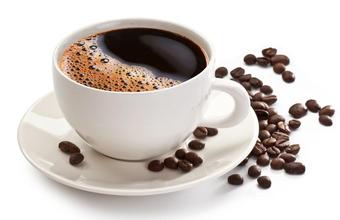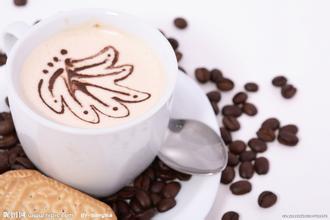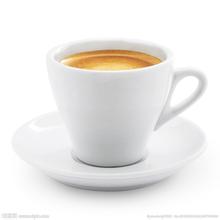Seven ways to make coffee become baristas instantly
Collect material. You'll need a French press, grits, wooden or plastic spoons, timers and cups.
2
Ground coffee. To make coffee in a French press, you need to grind the coffee into coarser particles, which makes the coffee taste better and richer. When you buy a coffee grinder, it is better to choose a stone grinder than a blade grinder because the former grinds more consistently.
3
Pour the ground coffee particles into a clean glass coffee pot. The usual ratio is one tablespoon of coffee granules and one cup of water. To press 4 cups, add 4 tablespoons coffee granules.
4
Bring the water to a boil. Pour it into the coffee pot and fill it with water so that the coffee particles are saturated, stopping when the water level reaches 1 or 2 cm below the metal ring above.
Some space is left on top to allow the coffee particles to expand, or "bloom," to form a foam, just as you usually see a layer of foam on espresso.
5
Use a timer. The key to making coffee in a French press is timing. Set the timer to 4 minutes and start counting immediately after the previous step.
At the end of the 1 minute, stir to disperse the foam so that the coffee particles are more evenly soaked. Add boiling hot water to the coffee pot until the metal ring is covered. Do not use metal spoons when stirring, as they may damage the coffee pot. Use wooden or plastic spoons and paint-painted chopsticks.
6
Close the lid. Place the vented lid and strainer over the coffee pot, making sure the vent on the lid corresponds to the spout of the coffee pot.
7
Filter pressure! At the end of 4 minutes, gently and firmly press the piston to the bottom. This will filter out the coffee particles and stop brewing coffee.
Note: If you forget to stir at the 1 minute time point, you may find this step a little difficult. Don't force the piston down, pull it back a little and then push it down. Pressing down forcefully may damage the coffee pot and make a mess.
8
Pour coffee into a cup and enjoy. Store leftover coffee in a thermos cup, ready to enjoy warm coffee. Add seasonings such as sugar and cream according to personal preference.
advertising
Method 3: Making Coffee in an Hourglass Chemex Coffee Pot
More Sexy Chemex The Kone for the caption Image 1
Collect material. You will need an hourglass coffee pot, filter paper, medium sized coffee, and cups.
2
Ground coffee beans. Use a grindstone grinder to adjust to medium grain grinding. You need about 6 tablespoons of coffee granules.
3
Place and rinse filter paper. Place the folded Chemex filter paper into the cone of the coffee pot, with the fold facing the nozzle.
Pour a little hot water over the filter paper to remove the smell and preheat the coffee pot. When all the water drips down, pour it out. Fit the filter paper completely to the cone.
4
Add coffee particles. Pour 6 tablespoons of medium ground coffee into the filter paper.
5
Brew the coffee powder. Bring the water to a boil and add just enough water to saturate the coffee grounds. When injecting water, make the water evenly contact the coffee powder. Remember not to inject too much water and not to overflow the coffee powder with water. Let the coffee bloom for 30 seconds.
6
Water is poured into the cone, and the hot water is poured down in circles, so that the coffee powder is evenly saturated. Fill until the water level reaches 0.6 cm above the top. Allow water to seep from the coffee grounds into the coffee pot.
7
Third water injection. When you see about a centimeter of ground coffee adhering to both sides of the filter paper, fill the filter paper with water again. Pour water along the sides and flush the dry coffee powder from the sides to the center. Keep filling the cone.
8
Remove filter paper. When all the water has penetrated, remove the filter paper and put it in place.
9
Start enjoying your coffee! Depending on your taste, choose cream and sugar. Good morning! Have a cup of coffee and have a nice day.
advertising
Method Four of Four: Conical Single Coffee Pot
Photo captioned by Hario 1
Collect material. You'll need a conical single coffee pot, a filter paper sized to fit (typically Melaka #2 coffee filter paper), a grinder, a cup to keep from spilling, and coffee cups.
2
Ground coffee beans. Grind coffee beans into a medium-fine coffee powder using a grindstone grinder.
3
Place and rinse filter paper. Place the cone on the cup. Fold the filter paper at the seam and place it inside the cone. Pour a little hot water over the filter paper to remove the smell of the paper while preheating the cylinder and cup. Drain the coffee before you make it.
4
Add coffee powder. Put 3 tablespoons coffee powder into the filter paper.
5
Let the coffee bloom. Bring the water to a boil and add just enough water to saturate the coffee grounds. When injecting water, make the water evenly contact the coffee powder. Remember not to inject too much water and not to overflow the coffee powder with water. Let the coffee bloom for 30 seconds.
6
Fill the cone with water. The hot water is poured down in circles so that the coffee powder is evenly saturated. Fill until the water level reaches the top, allowing water to seep from the coffee grounds into the cup.
7
When the glass is full, quickly move the cone over to the stand-by glass so the water can continue to drip.
advertising
Method 5: Making Espresso
With mmmm... Vivace's Espresso! Picture for title
1
Learn what espresso is. Espresso is slightly different from coffee brewed in the standard drip method. Not only does it require a special espresso machine to make it, but it also requires a special way to roast the ground coffee and the skills to brew it correctly. Although it is complicated to make and may not taste perfect at first, once you master the essentials, you will always have the skill.
2
Collect material. You'll need an espresso machine, a brew basket and filter paper, a grinder, a brew cup, and a proper cup to hold the brewed coffee.
3
Heat the boiling cup. Freshly made espresso loses some of its taste when it comes into contact with a cold cup. So you might want to preheat the espresso cups, too.

Important Notice :
前街咖啡 FrontStreet Coffee has moved to new addredd:
FrontStreet Coffee Address: 315,Donghua East Road,GuangZhou
Tel:020 38364473
- Prev

The most suitable conditions for the cultivation of Coffee trees Coffee Bean Baking
Washing type: in the sink, after rubbing with water and utensils, the pulp and colloid are removed and dried, which is called washing coffee bean with uniform quality. Non-washing type: after the sun is naturally dried, the pulp and peel is removed by a sheller, and its quality is unstable. b. The fruit of flat bean / round bean coffee is made up of two oval seeds opposite each other. The connecting side is a flat joint, called
- Next

How to quickly make coffee and how to choose coffee utensils
Step 1, add the required water to the metal pot, share about 350CC for two, and close it tightly. Step 2, put about 30g of coffee powder for two into another real glass pot. Step 3, lift the metal pot, open the lid of the alcohol lamp, jam the alcohol lamp cover with the metal pot, and light the alcohol lamp. Step 4. After the water is sold and heated, the hot water flows to the glass along the siphon.
Related
- Does Rose Summer choose Blue, Green or Red? Detailed explanation of Rose Summer Coffee plots and Classification in Panamanian Jade Manor
- What is the difference between the origin, producing area, processing plant, cooperative and manor of coffee beans?
- How fine does the espresso powder fit? how to grind the espresso?
- Sca coffee roasting degree color card coffee roasting degree 8 roasting color values what do you mean?
- The practice of lattes: how to make lattes at home
- Introduction to Indonesian Fine Coffee beans-- Java Coffee producing area of Indonesian Arabica Coffee
- How much will the flavor of light and medium roasted rose summer be expressed? What baking level is rose summer suitable for?
- Introduction to the characteristics of washing, sun-drying or wet-planing coffee commonly used in Mantenin, Indonesia
- Price characteristics of Arabica Coffee Bean Starbucks introduction to Manning Coffee Bean Taste producing area Variety Manor
- What is the authentic Yega flavor? What are the flavor characteristics of the really excellent Yejasuffi coffee beans?

